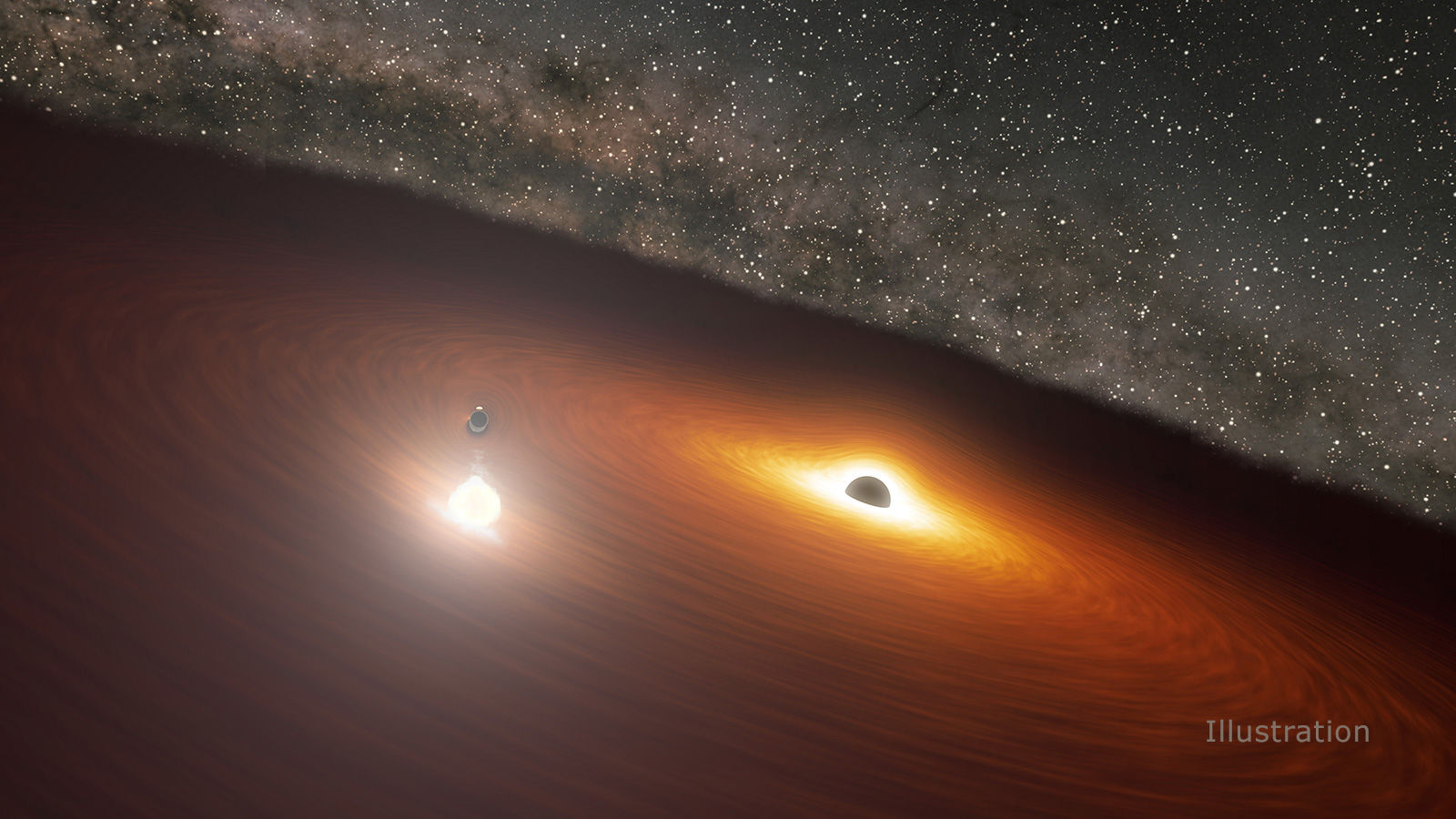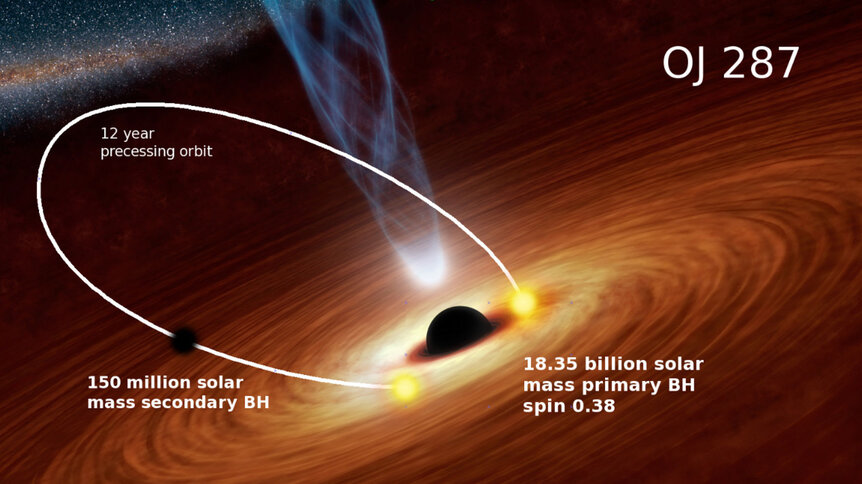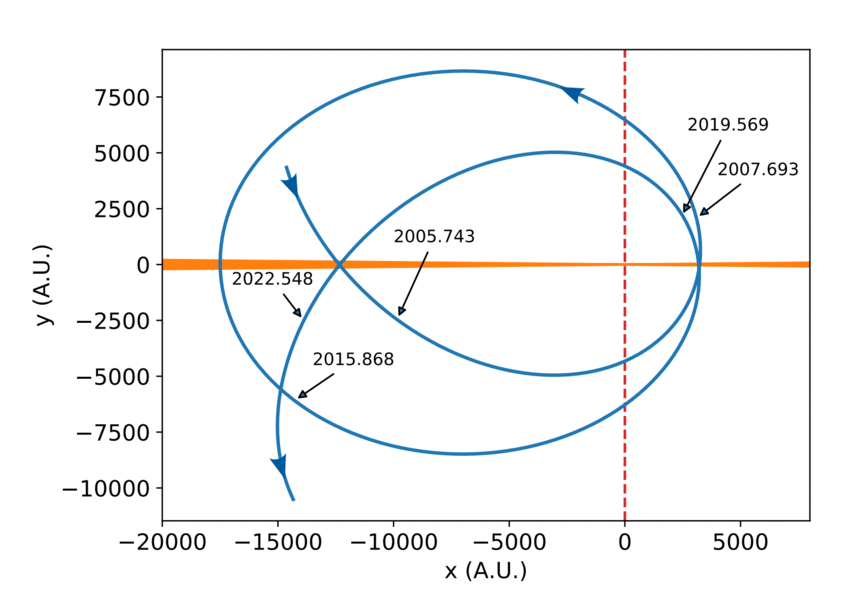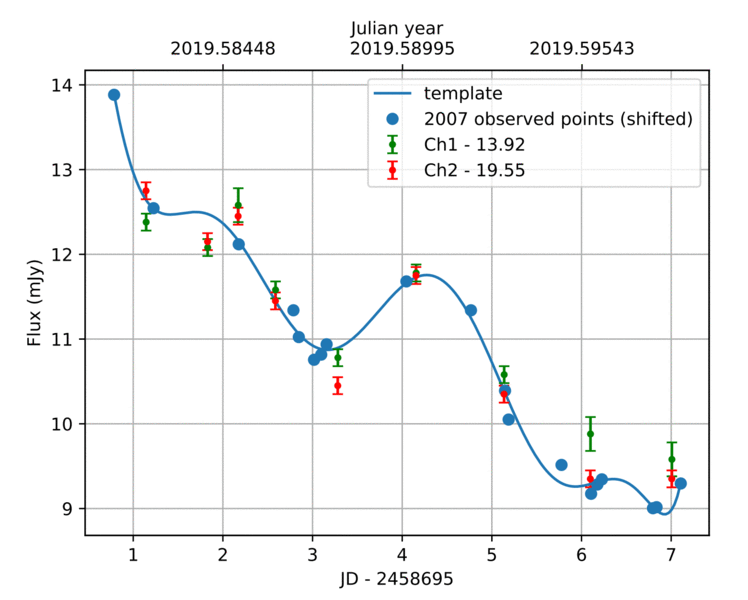A huge black hole eats a huger black hole's dinner then explodes with the light of a trillion suns

3.5 billion light years from Earth — a significant chunk of the way across the visible Universe — lies a monster. It's called OJ287, and it's an active galaxy, one with a tremendous amount of energy blasting out of its nucleus. It's classified as a blazar, one of the most luminous objects in the Universe, with energy pouring out of it across the electromagnetic spectrum, from radio waves all the way up to high-energy gamma rays.
The power source for this galaxy is a black hole in its center that is abjectly soul-crushing in its proportions: It has a mass of 18.4 billion times the mass of the Sun — that's the mass of a small galaxy, except it's all compressed down into a single object. This not only makes it a supermassive black hole — it's one of the most massive known.
A maelstrom surrounds it, a swirling disk of gas and dust light years across. Near the center, just outside the black hole itself, the material is moving at very nearly the speed of light, and is unimaginably hot. Friction heats it, since material moving farther out from the black hole is revolving around it more slowly, causing intense collisions between particles in the disk. It's so hot and so huge that it is hugely luminous, which is how we can see this object at all from so far away.
You'd think this would be enough superlatives for any object. But there's more. Oh my yes, there's more.
You see, OJ 287’s black hole isn't alone. It's a binary black hole, with a second one orbiting it. This companion is only — only! — 150 million times the Sun's mass. For comparison, the supermassive black hole in the center of the Milky Way is about 4 million solar masses, so even this smaller one in OJ 287 positively dwarfs ours.
It orbits the bigger one every 12 years, traveling along an elongated elliptical path that takes it to within 500 billion kilometers of its bigger compatriot. That's a long way in human terms (it's about 100 times the distance of Neptune from the Sun), but remember the scale of what we're talking about here: The accretion disk around the primary black hole is trillions of kilometers wide, so the secondary black hole plunges right through the disk, twice per orbit. And when it does, all hell breaks loose.
Its immense gravity draws in a huge amount of material from the disk, which heats up massively as it falls in. Even though the disk itself is still quite hot at that location anyway, this event dumps even more energy into it, creating two huge rapidly expanding bubbles of gas superheated to 100,000°C, nearly 20 times hotter than the surface of the Sun. This creates an intense flare of brightness from the disk, which grows rapidly at first as the bubbles expand, then dims as the bubbles get so big and spread out they become transparent.
How intense are they, you ask? Well, at their maximum they put out a trillion times as much light as the Sun. A trillion. That's more luminous than our entire galaxy, and the flares last for days.
The word apocalyptic falls very far short of the colossal terrifyingness of these flares.
The flares have been seen occurring for decades, but only just recently have been understood as the secondary black hole punching a hole in the accretion disk.
But it gets better yet: Not only did astronomers figure that out, but by understanding the behavior of the black holes, the disk, and the nature of Einstein's Theory of General Relativity, they were able to predict the most recent flare…. And get the timing right to just four hours!
They looked at the timing of the previous flares, which have a 12-year cycle to them. They come in pairs, but the timing between the flares changes. It turns out this is because of relativity. As I've written about a few times before, space is so heavily warped near a black hole that the orbit of an object around it changes its orientation in a process called precession. So instead of just making an ellipse over and over again, the ellipse itself rotates.
This means the object makes more of a rosette pattern, and the angle between the petals of that rosette depends on how close the object gets. Although the secondary black hole never gets closer than half a trillion km, the bigger black hole is so immense that it warps space on a huge scale, and the secondary black holes orbit shifts by 39° every time it passes! That's a huge change, and is why the timing of the flares changes. The orbit itself is shifting, so the timing of the black hole plunging through the disk shifts with it.
This video shows you what I mean:
The flare was predicted for 31 July 2019, which presented a problem: From Earth, that put OJ 287 just a few degrees from the Sun! That made observing it from our planet impossible. As luck would have it though, Spitzer Space Telescope orbits the Sun in a similar orbit as Earth but drifts away from it over time. In 2019 it was 250 million km from Earth, and had a clear view of the blazar. Scheduling issues meant it couldn't start observing it until after the start of the predicted flare window, but despite that caught the flare as it was happening!
After looking at the data, the astronomers discovered that had predicted the flare to within four hours, an amazing achievement. Not only that, but the way the flare brightened and dimmed was almost exactly the way it did in 2007; the physics and situation are about the same, but it's still rather astonishing to see the same thing happening a dozen years later on such a vast scale.
Their models predict the next impact to be in mid-2022. Unfortunately Spitzer was shut off earlier this year after 16 years of service, and unluckily the 2022 flare happens when OJ 287 is very close to the Sun again! I don't know if it will be observable when it occurs. The paper doesn't mention the next flare after that one, so we may just have to wait and see.
But we can't wait too long. The two black holes are emitting gravitational waves, shaking the fabric of spacetime every time they get close. The effect is small, but every time the second black hole passes it loses a small amount of orbital energy. Inexorably it's getting closer to its massive big sibling, and in 10,000 years or so they will merge, emitting a spectacular blast of gravitational waves that should be easy to measure from Earth… assuming we're still around here looking for such events. I hope so. That's a long time for humans, but the blink of an eye to the Universe.































